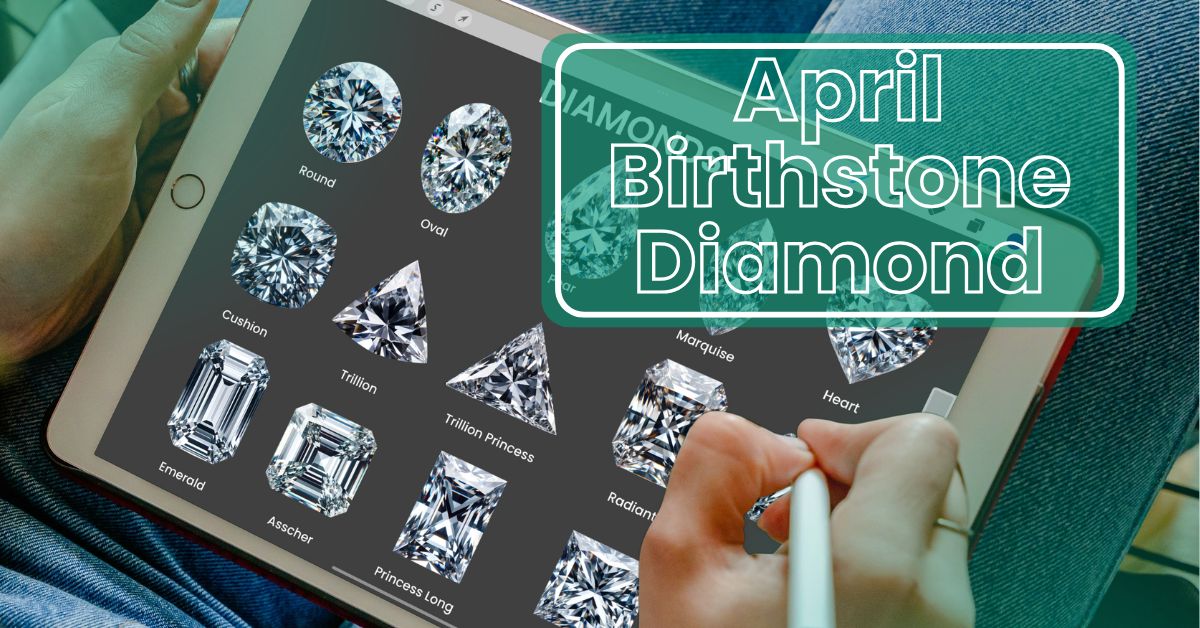
Diamonds have captivated the world for centuries, symbolizing strength, beauty, and timeless elegance. But beyond their luxurious sparkle, diamonds are one of the most scientifically fascinating gemstones on Earth. As April’s birthstone, they represent clarity, resilience, and everlasting love. In this blog post, we’ll explore the formation, properties, and unique characteristics of diamonds, revealing what makes them the most coveted gemstone in the world.
How Are Diamonds Formed? 🌍🔥
Diamonds originate deep within the Earth’s mantle, around 150-200 km (93-124 miles) beneath the surface. Their formation requires:
- Extreme Heat: Temperatures of 1,300–1,600°C (2,372–2,912°F)
- High Pressure: Between 45-60 kilobars, equivalent to the weight of thousands of kilometers of rock pressing down.
- Billions of Years: Most natural diamonds formed 1 to 3 billion years ago, making them some of the oldest natural substances on Earth.
Volcanic eruptions transport diamonds to the surface in a type of rock called kimberlite, where they are eventually mined.
📌 Fun Fact: Scientists have even discovered tiny diamonds in meteorites, suggesting that diamonds can also form in space! ✨
What Are Diamonds Made Of? 🧪
Diamonds are composed of pure carbon (C), just like graphite and coal. However, what makes diamonds unique is their crystal structure:
🔬 Diamond’s atomic structure: Each carbon atom forms strong tetrahedral bonds with four other carbon atoms, creating a rigid lattice. This structure gives diamonds their exceptional hardness and brilliance.
🔬 Graphite vs. Diamond: Though both are made of carbon, graphite has weak layers that make it soft, while diamond’s compact structure makes it the hardest naturally occurring material.
📌 Scientific Insight: Lab-grown diamonds have the exact same chemical composition as natural diamonds but are created in controlled environments, reducing environmental impact. 🌿
Hardness & Durability: The Toughest Gemstone 💎💪
Diamonds score a 10 on the Mohs Hardness Scale, making them the hardest known natural substance. This incredible hardness means:
✔ They can only be scratched by another diamond. ✔ Used in industrial tools, lasers, and electronics. ✔ Resistant to scratches, chips, and wear, making them ideal for everyday jewelry.
📌 Did you know? Diamonds are used in high-precision medical and scientific instruments, from scalpels to space technology! 🚀
Why Do Diamonds Sparkle? ✨
The breathtaking brilliance of a diamond comes from its ability to bend and reflect light. Three key properties contribute to a diamond’s sparkle:
💡 Refractive Index (2.42): This high refraction bends light inside the diamond, creating intense brilliance. 💡 Dispersion (Fire Effect): White light splits into a rainbow spectrum, producing the colorful flashes you see in diamonds. 💡 Cut Quality: A well-cut diamond maximizes its ability to reflect and refract light, making it appear more brilliant.
📌 Pro Tip: The Round Brilliant Cut is the most popular diamond cut because it is mathematically optimized for the best light return. 💠
Diamond Colors: Not Just White! 🌈
While diamonds are often associated with clear, colorless gems, they actually come in a variety of colors depending on trace elements and structural changes:
💛 Yellow & Brown: Nitrogen impurities 💙 Blue: Boron (e.g., Hope Diamond) ❤️ Pink & Red: Structural distortions (incredibly rare!) 💚 Green: Natural radiation exposure 🖤 Black: High graphite inclusions
Some of the rarest diamonds in the world are fancy-colored diamonds, highly prized for their uniqueness. 🌟
📌 Fun Fact: The most expensive diamond ever sold was the Pink Star Diamond, a 59.60-carat pink diamond that sold for $71.2 million! 💖
How Are Diamonds Cut? ✂️
A diamond’s cut is one of the most important factors affecting its beauty. There are many different diamond shapes, but the most popular include:
💠 Round Brilliant – Maximizes sparkle and brilliance. 💠 Princess Cut – A modern square shape with sharp edges. 💠 Emerald Cut – A step-cut design emphasizing clarity. 💠 Cushion Cut – A vintage-inspired shape with soft corners. 💠 Marquise, Pear & Oval – Elongated shapes that enhance size appearance.
📌 Expert Tip: Always prioritize cut quality over carat weight to get the most brilliance from your diamond! 🔍
How Rare Are Diamonds? 🌍
Despite their popularity, high-quality diamonds are quite rare:
✔ Only about 30% of mined diamonds are suitable for fine jewelry. ✔ The top diamond-producing countries are Botswana, Canada, Russia, and South Africa. ✔ Lab-grown diamonds are providing an ethical and sustainable alternative to mined diamonds.
📌 Fun Fact: The largest diamond ever found was the Cullinan Diamond at 3,106 carats, later cut into pieces for the British Crown Jewels! 👑
Final Thoughts: Diamonds – More Than Just a Sparkle
Diamonds are more than just beautiful gemstones—they are scientific marvels, formed over billions of years under immense pressure, with unmatched durability and brilliance. Whether you wear them for their symbolism, their strength, or their sheer elegance, diamonds remain one of the most extraordinary natural creations. 💎✨
💬 What’s the most surprising thing you learned about diamonds? Drop your thoughts in the comments! 👇
📌 Stay tuned for more diamond education, jewelry design tips, and industry insights throughout April!